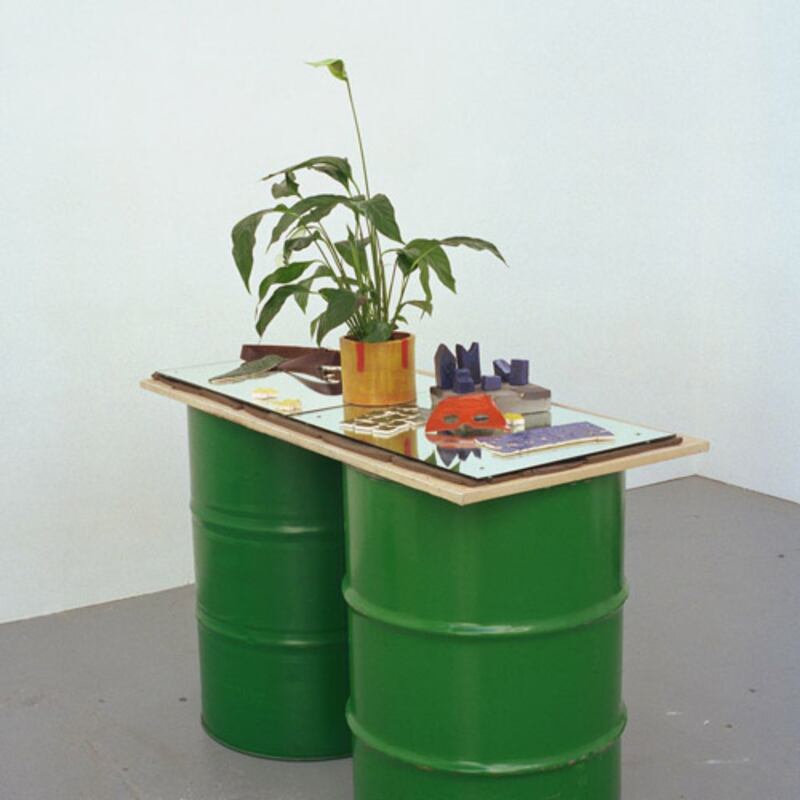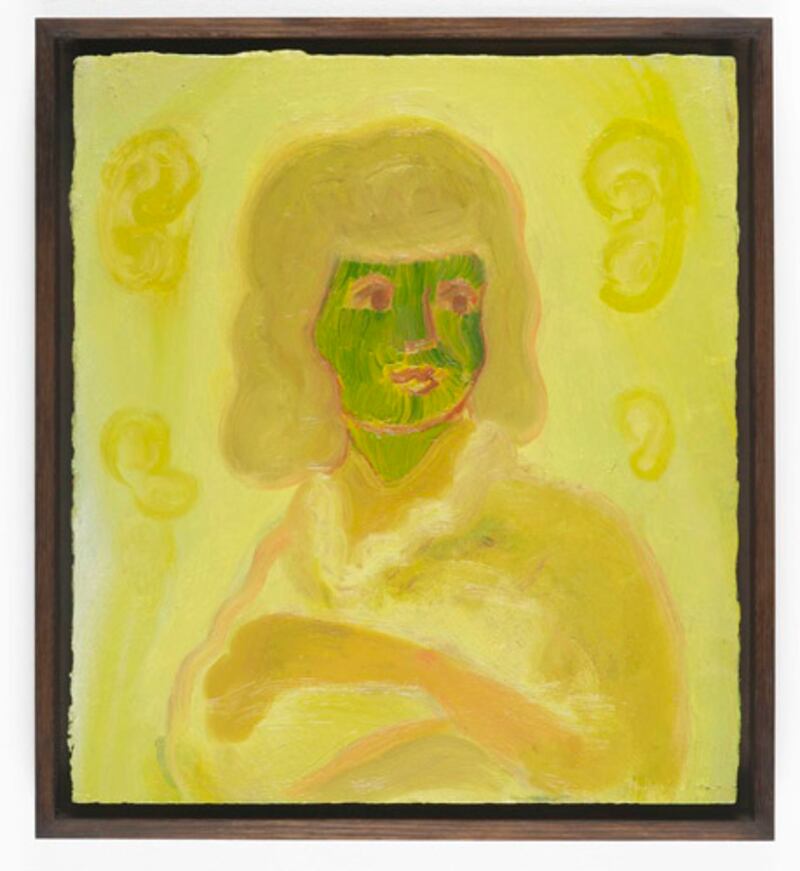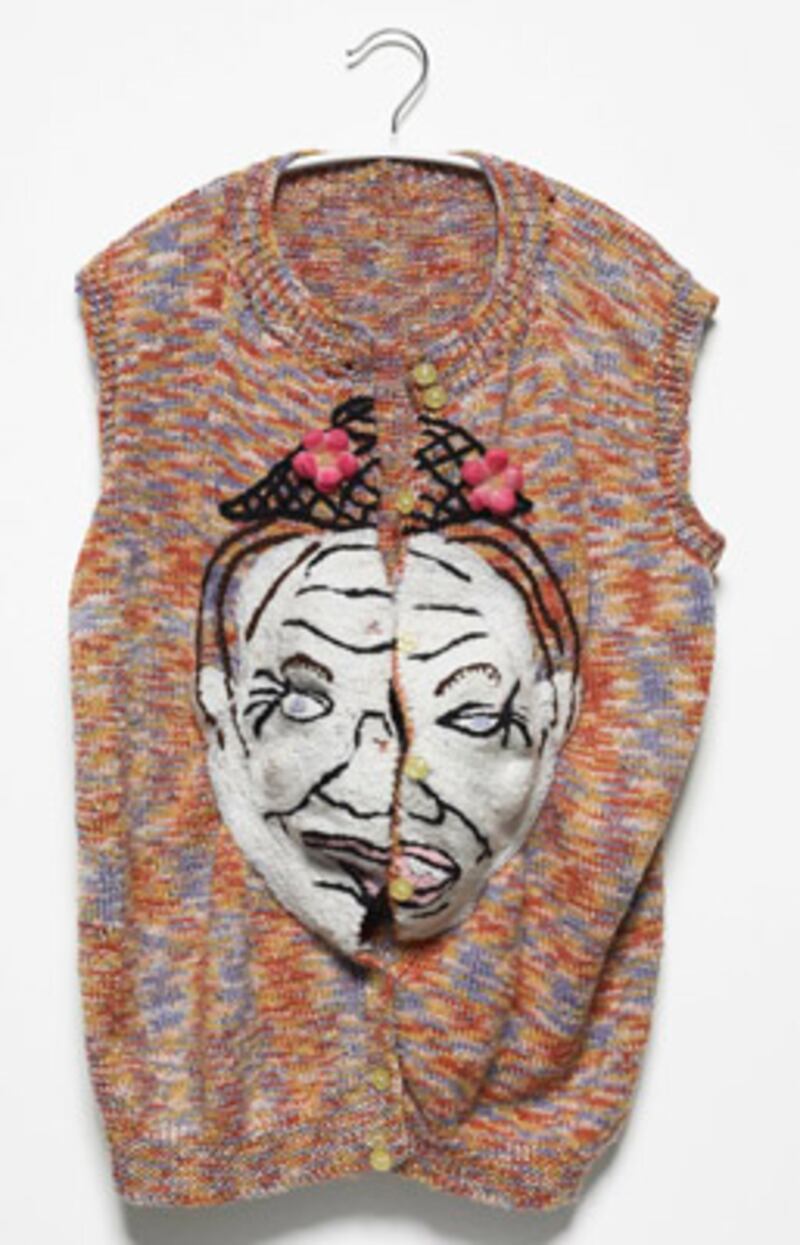
“The work I like best made you feel something,” says London-based figurative artist Chantal Joffe in the exhibition catalogue that accompanies this year’s Bloomberg New Contemporaries, an annual touring exhibition open to all fine art students and recent graduates based in the UK. Since 1949, the exhibition has played host to the likes of Jake and Dinos Chapman, Anthony Gormley, Damien Hirst, and David Hockney. It’s a tried and tested springboard for artists seeking to make the climb from obscurity to enduring fame.
Bloomberg New Contemporaries 2013, on display at London’s Institute of Contemporary Art from November 27 until January 26, showcases fresh work by the latest generation of artists out to make a mark—to make Joffe and her fellow selectors feel something. The lucky artists who succeeded now have a foot securely planted on one of the lower rungs of the art world.
Along with British artists Ryan Gander and Nathaniel Mellors, Joffe had the difficult task of whittling down the 1,500 submissions to the 46 included in this year’s exhibition. Both Joffe and Mellors were familiar with the process—each were chosen as New Contemporaries in their youth—but that can’t have made the task any easier. This crop was lucky: last year, there were only 29 places to fill.
ADVERTISEMENT
Unfortunately, more participants means tougher curation. For the fourth year running, the ICA has had to grapple with the complexities of coordinating a group show. In the catalogue, Mellors says that the trio of selectors “have not curated anything.” “It’s more a case of editing and hoping you can preserve the quality that’s already there,” he adds. ICA curator Matt Williams was happy to step up to the plate solo: “You know, too many cooks…” He’s intentionally edited the show loosely. Works by individual artists appear in individual alcoves here and there, but there are no clear favorites—a fact reflected in the catalogue, whose alphabetized black and white images emphasize the competition-free atmosphere. The works make their own statement, without accompanying words of wisdom, explanation, or criticism. And there are no restrictions on the display: As you near the end of the first space, you become aware that the artworks are unstoppable, as they creep along the corridor from the institute’s ground-floor gallery and make their way to another space upstairs.

It’s as though the selectors have tried to scramble Williams’s sense of direction: The chosen works come in a wide range of mediums—sculpture, photography, video art, and so on—and represent a dynamic range. Unlike last year, when traditional painting unexpectedly took center stage, this year the unorthodox rules. Isabelle Southwood created her vast, abstract painting, Homer Wake Up You’re Alive (2013), with such wild and wacky materials as mustard, pepper, and wasabi. Whether or not the bright yellow being outlined with black tape is supposed to be cartoon character Homer Jay Simpson bringing his sausage-shaped fingers towards his stubble-surrounded mouth, it’s amusing to imagine his reaction as the spicy taste comes into contact with his lips. (“Doh!”)
Southwood isn’t the only young artist tapping into popular and domestic culture. Hardeep Pandhal presents two celebrity-inspired sweater vests knitted by his mother: Bruce Parry vest by mum (2012) brandishes the face of explorer and BBC show Tribe presenter Bruce Parry; 2Pac jumper by mum (2012) shows the smiling face of rapper Tupac Shakur. Jason Brown’s sculpture is a comical take on an oversized domestic object: He crafted a giant deconstructed mug holder out of a tree he felled.
The show presents a cross-section of works that blur the line between the humorous and absurd. Though there’s something eerie about the way that the sculpture-like bodies, portrayed unsettlingly close to one another in their twos and threes, stare out at the viewer in Joanna Piotrowska’s FROWST series of hand-printed black and white photographs, it’s hard not to laugh at the siblings caught on camera in their tighty whiteys—the boys’ bright white briefs stand out as they stretch out, baby-like, on a patterned floral rug.

This year, it’s all about materiality, as artists manipulate their media to construct narratives and a sense of space, a theatre for expression. Julia Parkinson’s In Conversation (2012), a steel sculpture covered in paint and sand, stands in the middle of the first gallery space, a monumental work. On the one hand, it’s no more than a sandpit—one that isn’t tempting to play in though, with sharp edges and sand that’s less gold, more black. On the other, it has connotations of a Roman amphitheatre, one that’s waiting for you to take a seat. Catherine Hughes’s Into the Fold: The ‘Winter Bliss’ Package, Leela Kempinski Kovalam Beach (2012) presents a more idyllic desert island scene, with palm trees, sand that’s unquestionably golden, and a bright blue sky and sea. But along with the other two works in her series, the digital print of this sunny delight, like a curtain on a stage, has been pulled to one side.
There’s an uncanny mix of things visual and tactile. A number of the artworks are begging you to reach out and touch: The pound coin poking out of the clay in Agnes Calf’s Rolling £1 (2012) dares the viewer to snatch it while nobody’s watching; the earplugs in her Rotation (Earplug) (2013) may not be so tempting, but the destroyed cassette tape dangling down from Cream Live (2012) is irresistible to busy fingers itching to twiddle the twisted tape. Not all of the artworks are so approachable though; some, like Ferdinand Saumarez Smith’s Pareidolia (2013), want to disappear—the yeti-like figure standing in front of a holly bush is barely visible in the monoprint wallpaper piece.
The exhibition isn’t just about images—the video installations ensure that it’s also about sound. The majority of the somewhat strange soundtracks are reserved for headphone listening—a silent disco of sorts. Thank goodness: It would be difficult to concentrate on the art while listening to the high-pitched ranting voices of Adam Hogarth’s pair of trolls, shown on two flat-screen TVs, butt naked but topped with shocking pink hair. Some sounds do manage to roam free: A mooch around the downstairs gallery is accompanied by the burps of Calum Crawford’s comfort-eating character, a man greedily guzzling a bucket of KFC.

Upstairs, there’s a cinema-like space that showcases a selection of the exhibition’s video art; Showreel broadcasts a continuous loop of footage. Dominic Watson’s film, Like a Rolling Stone (2012), shows the artist boogying to “Start Me Up” alongside Henry Moore’s Standing Figure (1950) in the Glenkiln Sculpture Park in Scotland. The outdoors theme continues across the hall in the upper gallery, with a section of works that seem to be shouting the mantra, “Go green.” Grant Foster’s The Agnostic (2012) and The Accused (2012) are brought to life with bright yellow and green oil paint; Mark Essen’s Everything will come to an end but your testament will still exist (2013) puts a plant on a pedestal (or a green oil drum, to be exact).
When it was set up in 1949, the exhibition was known as Young Contemporaries; in 1973 it was renamed New Contemporaries—to avoid ageist associations. Well, there still seems to be an element of child’s play. Ophelia Finke’s Konquiz (2013) recalls fond childhood memories of playing with pieces of plasticine and modelling things out of clay; the artist’s signature, cut out of the block on a slant, in bold, capital letters, reminds us that it’s not only artists, but children too, who wish to make a mark. Around the corner, Daniela Sarigu’s Untitled (intermezzo) (2012) displays another kiddie-like mess: highlighter and permanent marker adorn an otherwise tidy piece of linen that’s pinned to the wall.
You might find, like the little old lady in Shelley Theodore’s 41-second loop of footage Madame Boussieux Looks (2013), that you’re overwhelmed by the creations by this year’s New Contemporaries; Madame Boussieux peers out of her door, looks up at the world around her, and swiftly scuttles back inside—the artwork around her is enough to make her run and hide. But remember Ryan Gander’s final line in the catalogue’s cheerleading selector’s snippet: “Trust me on the sunscreen.” The works on show might not appeal to you today, but some of the artists who created them will soon be stepping into the glare of the spotlight. It’s a safe bet that somewhere in here is tomorrow’s Turner Prize winner.
‘Bloomberg New Contemporaries 2013’ is on display at London’s Institute of Contemporary Art through January 26.





